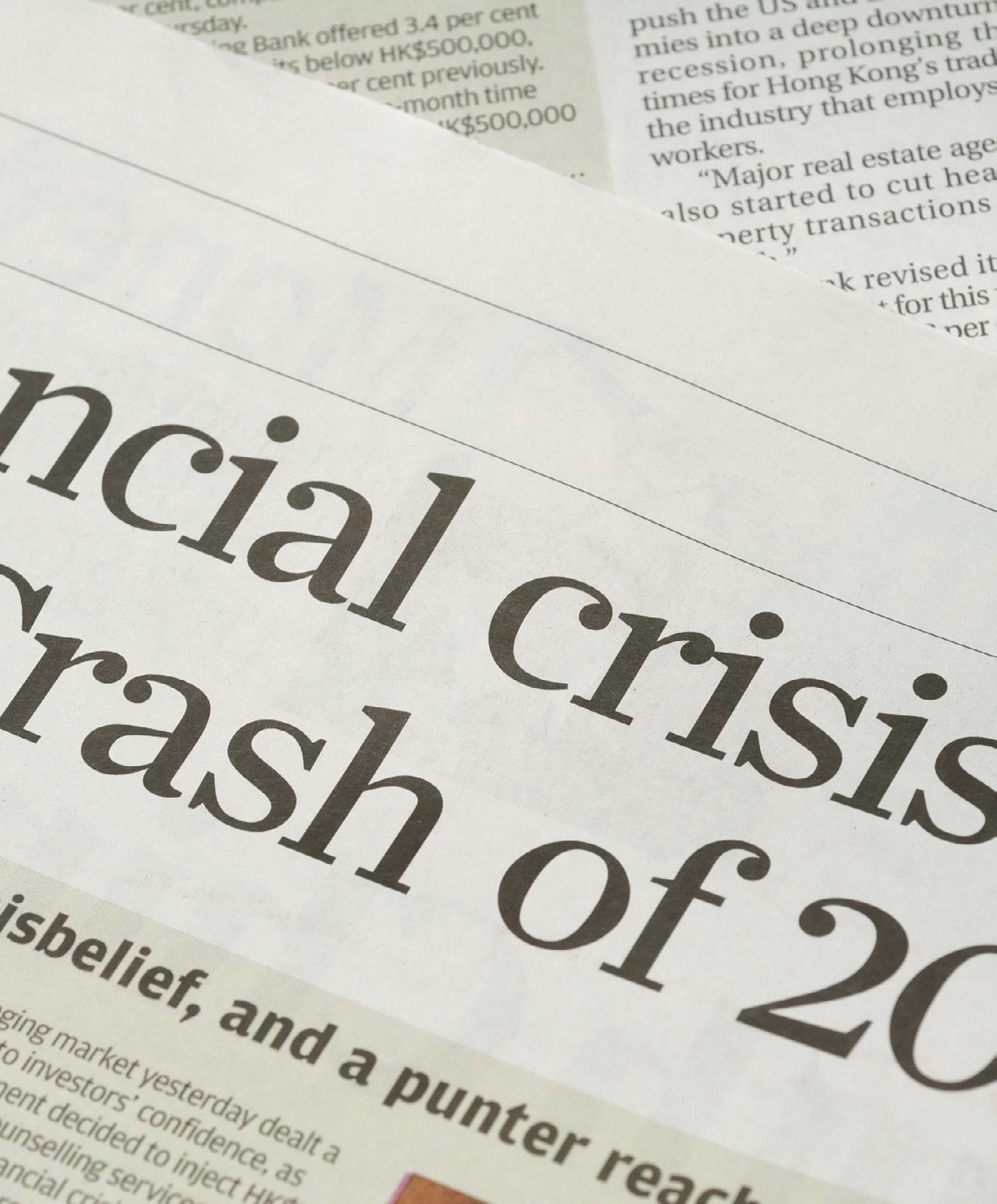 EXECUTIVE VICE PRESIDENT AND SENIOR ADVISOR, COMPASS, WASHINGTON, D.C.
EXECUTIVE VICE PRESIDENT AND SENIOR ADVISOR, COMPASS, WASHINGTON, D.C.
IN 2023? THE ROAD


 EXECUTIVE VICE PRESIDENT AND SENIOR ADVISOR, COMPASS, WASHINGTON, D.C.
EXECUTIVE VICE PRESIDENT AND SENIOR ADVISOR, COMPASS, WASHINGTON, D.C.

The age-long debate on whether it’s better to rent or buy a home won’t be settled in 2023. This question always has and always will depend on an individual’s motivation, situation, needs, and location.

For humans, there is no greater call than having a place to call home. Whether a person owns or rents, it’s their home. The takeaways from this article are:
• Market View - 2000 to Today
• 2008 Economic Crisis – A quick review
• History Repeating – 2023 isn’t 2008
• Rental Market – 2023
• Home Market – 2023
• Inflation
• Cash Buyers
• Inventory
• Resales
• Residential Real Estate Experts Share Their Opinions: Predictions for 2023
2023 is now upon us. What does the year ahead hold? Let’s review where we’ve been to understand the market, the headwinds, and the opportunities. FRED, the Federal Reserve Bank of St. Louis’ economic data site for historical and current housing data, is our starting point. So, let’s go!
At the turn of the millennia, the median price of a house was $165,300, rising to $169,800 in 2001 and then $188,700 by the first quarter of 2002. Median prices surpassed $200,000 by the beginning of 2004 and continued a steady rise until the first quarter of 2007. At that time, the median price held at $257,400.

As the economy neared a great recession, prices began a sharp decline. By the first quarter of 2008, median house prices had fallen to $233,900 and dipped to the lowest median price since 2003, hitting $208,400 by the beginning of 2009.
Experts universally agree that the private securitization market created the 2008 housing crisis. During the early 2000s, there was a massive expansion in mortgage lending; a large portion was in subprime loans with predatory features.
In 2018, Wharton real estate professors Susan Wachter and Benjamin Keys had an in-depth discussion with the Knowledge of Wharton (A Business Journal from the Wharton School of the University of Pennsylvania).
Wachter said that a primary mistake that fueled the housing bubble was the rush to lend money to homebuyers without regard for their ability to repay. As the mortgage finance market expanded, it attracted droves of new players with money to lend.
“We had a trillion dollars more coming into the mortgage market in 2004, 2005 and 2006,” Wachter said. “That’s $3 trillion dollars going into mortgages that did not exist before — non-traditional mortgages, socalled NINJA mortgages (no income, no job, no assets). These were [offered] by new players, and they were funded by private-label mortgage-backed securities — a very small, niche part of the market that expanded to more than 50% of the market at the peak in 2006.”
Keys noted that these new players brought in money from sources that traditionally did not spend toward mortgages, which drove down borrowing costs. They also increased access to credit, both for those with low credit scores and middle-class homeowners who wanted to take out a second line of credit. “In doing so, they created a lot of leverage in the system and introduced a lot more risk.”
Credit expanded in all directions in the build-up to the last crisis — “any direction where there was appetite for anyone to borrow,” Keys said. “An important lesson from the crisis is that just because someone is willing to make you a loan, it doesn’t mean that you should accept it.”
According to Wachter, a key misperception about the housing crisis is that subprime borrowers were responsible for causing it. Actually, it was investors who took advantage of low mortgage finance rates who played a fundamental role in fueling the housing bubble. “There’s a false narrative here, which is that most of these loans went to lowerincome folks. That’s not true. The investor part of the story is underemphasized, but it’s real.”
The evidence shows that it would be incorrect to describe the last crisis as a “low- and moderate-income event,” said Wachter. “This was an event for risk-takers across the board. Those who could and wanted to cash out later on — in 2006 and 2007 — [participated in it].” Those market conditions also attracted borrowers who got loans for their second and third homes. “These were not homeowners. These were investors.” The result was an epic failure of the U.S. housing sector that


wrecked the banking industry and crashed stock markets at home and abroad. This drove the worst global recession that had been seen in generations.
At the end of 2009 and into the next decade, median home prices rose steadily. The 2010s ushered in the beginning of the longest consistent economic growth period in modern American history, which lasted from June 2009 to February 2020.
In the first quarter of 2011, home prices averaged $226,900. That figure stood at $238,400 in 2012, $258,400 in 2013, $275,200 in 2014, and $289,200 by 2015. Over the next several years, home prices grew by roughly $10,000 per year. Prices briefly fell around 2019, when they dropped to $313,000 from $331,800 in the prior year’s first quarter.
In the first quarter of 2020, just ahead of the COVID-19 pandemic, median home prices were $329,000. Since then, prices have dramatically shot up, reaching a median of $369,800 in 2021’s first quarter and $428,700 in 2022. Over the last ten years, prices increased nearly 80%, and the median price of $454,900 is the last number provided by FRED for the third quarter of 2022. The ability to work remotely reshuffled the deck allowing people to live anywhere with no impact on their job. It changed the market, and that continues to this day.
If you turn on the television, pick up a paper, or listen to the radio, you are bombarded with the doom and gloom storylines that the media propagates. Most of those talking about the housing market are pundits who know little to nothing about the housing market, let alone understand the differences between 2008 and what we face now.
The slowdown we saw in Q3 of 2022 does not correlate with 2008. As a real estate professional with 20 years plus experience in the Washington, D.C. Metro area, the market is truly a mixed bag. The days of 10-15 contracts on a property are gone. But the right home which is priced well can still yield multiple offers (two to three) in this market. The predicted market collapse hasn’t materialized.
Do we see price reductions? Yes. Are we seeing seller concessions? Yes. But they are still few and far between and are not the norm here in the Washington, D.C. Metro area. However, I don’t believe they will be an enduring part of our local market.
Unlike 2008, today’s culprit influencing the market is the rise in interest rates following the Federal Reserve rate hikes. Additionally, rising rental rates throughout the US are impacting the market. When you can’t buy, you rent. The two are intrinsically tied together. As you can see, the market fundamentals, practices, and conditions that caused the crisis in 2008 don’t exist in 2023.
Today, lenders are regulated in ways they weren’t in 2008. The nation’s lending procedures and practices were completely overhauled to prevent and shield it from economic shocks to prevent duplication of 2008. The policy changes instituted by the Dodd-Frank Wall Street Reform and Consumer Protection Act of 2010 ended the old ways of doing business and brought reform. It sought to end the Too Big to Fail Scenario.
Gone are the zero-down payment, NINJA (no income, asset, or job verification), interest-only, teaser rate, and predatory loans. Today, banks require borrowers to prove that they can afford the loan. Lenders truly scrutinize borrowers, requiring them to have significant down payments, excellent credit scores, and income documentation.
Tim Mayopoulos, who oversaw the mortgage company Fannie Mae in the wake of the 2008 crisis and is now an executive at the mortgage-technology firm Blend Labs Inc., told The Wall Street Journal, “I think one of the reasons people don’t appreciate the reforms is that they were built brick by brick”.
The changes instituted have created a generation of genuinely vetted, financially stable buyers who can pay their mortgages, regardless of the dips and economy. Most homeowners today are sitting on substantial home equity and have 15–30-year fixed-rate mortgages with historically low rates. Those with adjustable-rate mortgages aren’t subject to revisions with teaser rates. They are financially more stable than before.
Currently, approximately 44 million American households rent. It is more now than at any other time in nearly a quarter century, according to Rent Café. In many markets through the first half of 2022, renters were encountering rising rents (Miami being the hottest market), properties were receiving multiple applications, and renters were bidding up the rent numbers. Fast forward to the end of summer 2022, and the market began to cool off.
Apartment List just released their 2023 report, indicating the following – our national index fell by 0.8 percent over the course of December, marking the fourth straight monthover-month decline. The timing of this cooldown in the rental market is consistent with the typical seasonal trend, but its magnitude has been notably sharper than what has been seen in the past. This suggests that the recent swing of falling rents is reflective of a broader shift in market conditions beyond seasonality alone. As we look ahead to the new year, we expect that 2023 will see bargaining power shift back to renters, and that rent prices this year will grow only modestly, if at all.
In my local market, we have seen the rental market easing considerably, which tracks with national trends. Apartment List recently released the Washington, D.C. Metro area information and found the following, looking at the entire metro area vs. just D.C. proper:
1). The median rent in the metro area is $1,903. The median price in Washington, D.C. proper is $1,798, 5.5% lower than the price across the metro area. Metro-wide annual rent growth stands at 3.0% above the rate of rent growth within just the city.
2). Of the 32 cities in the Washington, D.C. Metro area included in the database, Tysons Corner is currently the most expensive, with a median rent of $2,168. Suitland, MD, is the metro’s most affordable city, with a median rent of $1,536. The metro’s fastest annual rent growth is occurring in Leesburg, VA (9.5%), while the slowest is in Chevy Chase, MD (-2.6%).
Realtor.com data ending in June of 2022 showed 38 of the 50 largest U.S. metro areas had lower monthly rental costs than first-time homeownership. Those numbers should be roughly the same when the final reports are issued for the second half of 2022.
Currently, 932,000 apartments are under construction nationwide, the highest count since December 1973, according to Dr. Dietz of the National Association of Home Builders. Expanding inventory in the major metro markets across the country, including the Washington, D.C. Metro area, will benefit the renter.
While renting isn’t always more affordable than buying, the current conditions in most major metro markets, including specific communities here in the Washington, D.C. Metro area, make renting a better bet. Renters have returned to the driver’s seat.




Whether to buy or rent is a personal decision. For many people, it’s the financially feasible option that wins the day. But beyond the money question, so many other factors play a part. Due your due diligence. Ask yourself a few questions. How long do you plan to live in a particular location? Will your job or career require you to move in the short term, and are you ready to commit to being a homeowner?
Buying in 2023 is dependent on who you are and your individual circumstances. Are you financing your purchase or paying cash?
While housing experts are watching the economy being pulled in multiple directions with inflation, interest rates, geopolitics, Covid’s return (which could result in supply chain issues again), and recession fears, the market continues to move forward. The activity a buyer sees and encounters is truly market specific.
Realtor.com reported that nationally the active inventory of homes for sale grew 54.7% year-overyear in December, but it is still well below pre-pandemic levels (-38.2% compared to the December 20172019 average). Among the 50 largest U.S. metro markets, 49 markets posted yearly active inventory gains in December, led by Raleigh, NC (+226.2%), Nashville, TN (+226.0%), and Austin, TX (+186.6%). Only Hartford, CT (-7.7%) saw a year-overyear decline in the number of for-sale homes.
The Bureau of Labor Statistics released the Consumer Price Index Summary (CPI-U) and its latest inflation data shows prices were 6.5% higher in December than they were a year before and fell 0.1% compared to November. That is the first-time prices have dropped month over month since May 2020. The annual rate of price increases was the slowest since October 2021 but well above the Fed’s target of 2%.
Inflation remains well above normal levels, and with the continued easing seen in December, it is giving needed relief to households and businesses, but much work remains to be done. The falling costs for gasoline significantly brought prices down in December, offering a glimmer of hope and positive movement to policymakers, and signaling that steep price increases are declining in some of the key sectors. It is a hopeful sign for the broader economy. The aggressive moves by the Fed in tamping down inflation appear to be working. But it’s a mixed bag.
While the overall numbers in the CPI-U came down, many
sectors are worrying and showing little signs of actual decline. The nation’s housing costs continue to rise, ending December up 7.5% over the past year. The increase in housing accounted for more than half the total increase in the “core inflation” measurement.
“I don’t think anyone knows whether we’re going to have a recession or not and, if we do, whether it’s going to be a deep one or not,” said Jerome Powell, Chairman of the Federal Reserve, on December 14, after the Federal Open Market Committee’s final meeting for 2022. “It’s just not knowable.” The Fed continues to walk a fine line – do too little, and inflation stays too high; do too much, they risk sending the economy into a recession.

Interest rates are the true key to what will or will not happen in 2023. As the plurality of purchases is done via financing, what the Fed does is truly crucial to the outcome and activity in 2023.
The Federal Reserve raised the federal funds rate again in December but at a slower pace than it had for most of 2022. The Fed’s next meeting is set for January 31 and February 1; the expectation from industry analysts and Wall Street is that they will raise the interest rate by half a percentage point or onequarter of a percentage point. Fed officials have said numerous times that incoming data will guide their decisions. The recently released CPI-U numbers released in December are not expected to change their outlook.
As inflation appears to be easing and with the expected rate hikes, many analysts believe the Fed will reverse course mid-year and begin to lower rates.
“With the Fed maintaining an aggressive posture and inflation still high, mortgage rates will roller coaster up and down during the first half of the year before a more substantive slide takes hold in the back half of 2023,” says Greg McBride, chief financial analyst at Bankrate, who predicts a “notable pullback” on mortgage rates as inflation trends lower.
The conventional wisdom of analysts is that the Fed increases rates by 0.25 percentage points at their future January/February 31- 1 and March 21- 22 meetings, then holds rates steady after that.
There is significant economic data that will come in before the Fed’s meetings and subsequent announcements. This data can change the Fed’s view. The decision will be announced at a press conference with Chairman Powell on February 1st at 2 pm EST.
Cash is King. It’s a well-known saying in real estate. Those with cash in the luxury sector have opportunities not seen in years.
Luxury home sales declined in the three months ending November 30, with a drop of 38.1% year over year. This marks the most significant decline on record, surpassing the previous record of 31.4%, according to recent data issued by Redfin Corp. California and Long Island, NY, saw the most significant declines in high-end home sales.
The National Association of Realtors reported in November 2022 that cash offers made up 26% of all home purchases, up from 24% a year earlier (and before the market downturn). In resort markets and large metropolitan areas, the rise in cash is expected to continue in 2023.
The price declines and rising inventory provide ample opportunities for savvy purchasers and investors to make deals. Cash provides certainty for sellers as there is no need for a lender’s approval, appraisal, or underwriting, which can take several weeks. The deal is less likely to fall through. Cash deals also can close significantly faster than financed deals.
Ask anyone in residential real estate, and the complaint is always the same; we need more inventory. Over the last decade-plus, there have been more buyers than homes available, which has exacerbated the supply problem and created a crisis of affordability driving home prices to record highs year after year.
Multiple factors play out in this crisis, including new construction, resales, supply chain issues, and labor.
New construction had kept pace with demand since the beginning of the century and took a steep decline with the financial crisis of 2008. The decades of underbuilding have ushered in a dire situation that is getting worse and will continue to worsen without a nationwide plan to solve it.
According to Freddie Mac, at the end of 2020, when the housing boom was just getting started, the country was short 3.8 million units of housing. The National Association of Realtors issued a report in June of 2021 authored by the Rosen Consulting Group called Housing is Critical Infrastructure: Social and Economic Benefits of Building
More Housing. In the report, The NAR declared, “The state of America’s housing stock… is dire, with a chronic shortage of affordable and available homes [needed to support] the nation’s population. A severe lack of new construction and prolonged underinvestment [have led] to an acute shortage of available housing… to the detriment of the health of the public and the economy. The scale of underbuilding and the existing demand-supply gap is enormous… and will require a major national commitment to build more housing of all types.” The report also said that growth in America’s housing inventory had slowed significantly since the turn of the
century, particularly over the past decade. This trend affects every region of the country, creating what the NAR report calls an “underbuilding gap” of 5.5 to 6.8 million housing units since 2001. It affects almost every major metropolitan area in the United States but is particularly acute in major metros like Los Angeles, New York, Boston, DC, and many more.
The U.S. Census data revealed that there had been an uptick in the construction of single-family homes during the pandemic. Builders pulled back at the end of 2022 as new construction inventory lingered due to an increase in interest rates which resulted in a downturn of 16% in November 2022 (from the same time a year ago). Building permits were down 22% during the same period.
Mike Kingsella, CEO of Up for Growth, a Washington, D.C.based housing policy research nonprofit, told USA TODAY in October of 2022 that Los Angeles is among the most underproduced housing markets in the U.S. with a shortfall of nearly 400,000 homes or about 8.4%. In July, Up for Growth released a study tracking more than 800 U.S. housing markets across the country from 2012 to 2019.
“The pipeline is essentially shrinking,” said Robert Dietz, the chief economist for the National Association of Home Builders, which is expecting single-family home starts to fall by another 15% to 20% in 2023 before beginning to rebound in 2024, he told the NYT
When you factor in supply chain issues, the high cost of materials, and a labor shortage, you have a recipe for continued chronic shortages to continue. Much progress is needed, and much work is to be done.
While this is a national problem, it can only be solved locally with cities and municipalities working to change zoning ordinances to allow more density and different housing types. There also needs to be an honest conversation about converting the plethora of empty office space into residential. Whether cities and local municipalities take that road to help ease the crises is yet to be seen.
As the nation’s housing supply remains at chronically low levels, the shortage will continue in the resale market unabated. Many homeowners refinanced during the pandemic; many are sitting on interest rates in the 2-3% range.
Effectively, these sellers have golden handcuffs and a reason to stay in their existing homes. Many of these homeowners are opting to renovate rather than purchase a new home which would come with an interest rate in the 6-7% range for a 30-year fixed. This leaves a considerable amount of existing inventory off the market.
“For most of this year, prospective home buyers have faced the dual challenges of elevated mortgage rates and limited housing inventory,” said NAR’s president Kenny Parcell, in a recent report. At the current sales pace, inventory is at a 3.3-month supply, according to NAR. (These numbers were as of the end of November 2022.)

If you are a buyer, take advantage of the current market. Yes, it’s more expensive to buy a home than last year, but the process is less contentious, and buyers are getting contingencies into contracts from financing to appraisals and home inspections for the first time in years. In many markets, parity between the parties is back, and having to overbid is currently a thing of the past.

“It’s a much better time to buy now than it was six months ago. You’re not competing with 44 other people in front of you online at the open house. You’re not competing with people putting in offers sight unseen. That was not a good environment,” Greg McBride, the chief financial analyst at Bankrate.com, told The New York Times.
As we just concluded the second week of the new year, my personal experience with clients is that they are ready to get back in the game. Many of my buyers know that interest rates at 2%-3% are a thing of the past and will not be making a return. Many opt for 7/1 and 10/1 arms to get into the homes they want and refinance later when rates and the economy have normalized. If we see anything in 2023 and 2024, it will be more of a housing correction than a crash. As demand for resales and new construction remains high, it will most likely keep prices from tumbling too low.
“We are barely finished working on the 2nd week of 2023, and I already feel a shift in our residential market here in Los Angeles. Our luxury property transfer tax will increase significantly on April 1st this year. Sellers are seriously pricing their luxury homes to attract buyers who will close before the new tax enactment. I feel optimistic about this year’s market in LA because negotiations between seller and buyer are more balanced than in the previous two years. Serious sellers have priced their homes to sell quickly and are better tuned to the prevailing market price than ever before.”
- Ernie Carswell, Douglas Elliman Real Estate, Beverly Hills, CA“For 2023, the San Diego market won’t be as steamy hot as it has been the past few years, but overall, the appeal to own a home in America’s Finest City still resonates for many buyers. Buyers in a position to buy should buy if they find the ideal property, and historically, real estate has been an asset class that appreciates long-term. With less competition and prices dipping, this may be an optimal time for buyers to take advantage of the market, especially as interest rates are projected to decline in 2023. We continue to see an influx
of new residents from Northern California, Los Angeles, and cold weather states migrating to San Diego for its superb climate, lifestyle, tech-driven industries, and family-friendly communities.
A newly proposed mansion tax will go into effect in Los Angeles in April 2023, imposing a 4% tax on properties sold above $5 million and rising to 5.5% on properties above $10M. This could negatively impact the luxury market in LA and cause more buyers to move to San Diego.”
– Julie Han, Compass, San Diego, CA“I’m cautiously optimistic about 2023, San Francisco is a world-class city that has always had an inventory challenge, and this year will be no different.
As we return to a more normalized market, we’ll see a slower start to the year, with sales picking up in Q2 and Q3. There are a lot of variables at play, rates, inflation and the economy, and we’ll see intelligent Buyers taking advantage of the opportunities and the ability to negotiate on price and terms, which we haven’t seen in years!”
– Colleen Cotter - Vanguard Properties, San Francisco, CA
“Seattle and its surrounding suburbs of Bellevue, Kirkland and Medina, Washington are highly desirable places to live and are uniquely positioned geographically and are surrounded by water and mountains.
As spring approaches, we should begin to see more desirable homes come to market, but for now, there is a shortage of inventory. While our region is a center for technology, we are seeing more hybrid models of work-fromhome and less in-person office attendance becoming the norm. Washington State is also known for having “no-state income tax“, one of only a handful of states.
Our closest neighbor to the North, Vancouver, B.C., and Canada as a whole, has implemented a two-year ban on “foreign non-resident investment” in Canada, beginning this January of 2023.
As a result, we are already receiving inquiries from
foreign buyers on ultra-high-end trophy listings. These foreign buyers would have otherwise elected to purchase a home near their friends and family who have already invested in Canadian real estate. They are now looking at a short drive (2 1/2 hours) and only a few hours south of our region.
I do believe this trend will trickle down to many of our high-end homes, newly constructed condominium towers, and certain highly desirable sectors of the single-family market, due to our close proximity to the border.
Additionally, Washington state is poised to receive continued attention from high-net-worth Californians hoping to escape weather-related issues, along with mounting local and state taxes and the new mansion tax in Los Angeles.”
- Moira Holley, Realogics Sotheby’s International Realty, Seattle, WA
“Since the beginning of the year, in the Greater Phoenix market, we have seen an increase in contracts and the very best properties are still receiving multiple offers. The luxury market in Scottsdale and Paradise Valley has continued to remain strong with year-over-year price per square foot growth between 20-24% and continued limited inventory. However, buyers’ hesitancy with leveraging higher-rate loans or pulling money out of the fluctuating investment during Q4 of 2022 slowed the market down just enough which created new opportunities for seasoned real estate connoisseurs to begin jumping back in.”
- Monica Monson, The Nobel Agency, Scottsdale, AZ“Denver’s real estate market remains strong. Inventory levels are low, and prices are holding steady. I suppose like a number of cities across the nation, what we’re seeing could be described as more of an illiquid market rather than a declining one. Naturally, if you’re just entering the market, the cost of acquisition and the costs to finance are higher than they have been in years. However, the higher ends of the market are showing few signs of slow down. There is still a lot of money looking for a place to land, and real estate remains a strong contender for those investment dollars.”
– Stan Kniss, Fantastic Frank Colorado, Denver, CO“In Vail and Aspen, we are an island within ourselves here. Resort markets like these usually stay pretty strong. While the big cities are slowing down, and we have a slight softening, the buyer demand is still quite strong. Since we don’t have that much inventory, we will always have more demand than we supply, given the resort market we are in. We don’t have a lot to sell. I also think because we have so many cash buyers, I think it will continue that buyers will be buying this year, paying cash, paying more attention to details, and looking at the location a little bit closer.
Overall, I think our market will stay strong in the mountains. Interest rates are affecting a little bit of the lower end, but the lower range of our market is under $3M, and instead of getting 4-5 offers, maybe we are getting 2. As we go into 2023, we are still in a sellers’ market, but I see Buyers expecting to find ‘’deals’’ which are few and far between in our resort communities. I am predicting 2023 will continue as it has started off.”
– Liz Leeds, Slifer, Smith & Frampton, Vail, CO“I think 2023 will be an extension of the second half of 2022 – as the FED continues to disincentivize most sectors of the market, those sensitive to interest rates will hold back and monitor as their confidence is lower, while those higher price point homes that offer continued solace, safety and a new quality of life will continue to transact at a consistent pace. The macro market has lost confidence and urgency – providing a unique opportunity for those buyers with an advocate working on their behalf and sellers empowered with real-time data on evolving conditions.”
– Mack Mendenhall, Compass, Jackson Hole, Wyoming
“My prediction for 2023 is that the market will resemble the pre-Covid market of 2019. It will be more of a balanced market where buyers have more negotiating power than in 2021 and the beginning of 2022. However, the inventory is extremely low, and depending on the location and quality of the property, those sellers may still hold all the cards. Everyone is watching rates, and this year may be an up-and-down market.”
– Cindi Sodolski, Compass, Chicago, IL
“With the yield curve inverting on July 9th, I know we are all waiting on the impending recession: however, we need to remember that real estate is hyper-local, and not all markets will suffer.
Austin is likely to be the last to enter and first to exit the recession and will likely experience a shallow recession, given other factors like high growth and low unemployment. Moreover, our housing inventory is still very low (around three months which is still a sellers’ market by definition).
Furthermore, a slowdown in new construction and fewer re-sales due to homeowners being locked at very low rates and low taxes (Austin saw a huge increase in our real estate tax valuations last year) will put further pressure on our inventory.
Buyers will realize that home values are not likely to depreciate and will re-enter the market regardless of interest rates. Many lenders offer free refinance options, and buyers’ negotiating ability offsets the current rates. Our market will become very competitive again quickly. When interest rates soften, we may even see a repeat of the highly competitive market (less than 30 days inventory) that we saw in the first half of both 2021 and 2022.
In short, there hasn’t been a buying opportunity like this in Austin for a long time, and it will not last long.”
– Laurel Pratt, Compass, Austin, TX“We saw some leveling off in neighborhoods adjacent to the Park Cities. The demand, however, is still outpacing supply, especially for turnkey homes in sought-after neighborhoods. Speculative builders have stopped gobbling up lots as quickly as they were in the past; however, there aren’t many custom-building sites remaining, especially in the close-in established neighborhoods. So, the high-end new construction starts have slowed, yet the migration has not slowed people coming here. Therefore, I anticipate low supply keeping prices at least stable in Dallas for the luxury neighborhoods. And we are still seeing some competitive situations if two parties want the same property or home. Goldman Sachs just started construction on a building downtown to house the 5,000 employees calling Dallas home in the near future. Announcements like this one are what is driving demand up for Dallas. The long-term viability of Dallas real estate is excellent. I am encouraging buyers to get educated on the market sooner than later and not to be afraid to pounce on an opportunity when one comes along. I do not forecast vast new inventory this spring, so being in the market now is wise.”
“Fortunately, Charlotte, North Carolina, is an area of the country continuing to experience exponential growth in residential and commercial real estate. I remain optimistic about 2023 despite the rising mortgage rates. With continued historically low inventory and high demand, I feel we will have a strong year ahead for real estate in the Carolinas.”
“I think the Atlanta market will remain active in all price points in 2023. Atlanta has been ranked the #1 market to watch in 2023 by the National Association of Realtors based on many metrics including housing affordability, employment and population growth, when compared to the national average. Because of these key metrics, many major tech companies are opening offices in the Atlanta area which will continue to bring a large influx of relocation buyers. I am expecting another solid year of sales like 2022.”
“Most of my business takes place on the Island of Palm Beach, with the additional business done in the surrounding areas. The momentum at the end of 2022 and the beginning of 2023 is starting to feel much more like it did prepandemic. Our “pre covid” selling season traditionally sees 70% of our sales from February through May. I expect that to be what we see in 2023 instead of the past couple of years when we were selling year-round. With inventory still tight, I expect prices to remain stable but likely drop 10% or so off the previous comps last year. I expect West Palm Beach and the surrounding areas to see slightly more significant declines. Still, due to the influx of people to the area, we are far more insulated from anything dramatic. I expect sales volume to be down 30-40% YOY, not due to a lack of demand but a lack of supply. At our current pace of supply growth, we are unlikely to see the inventory levels on Palm Beach at pre covid levels for many years, if ever again.”
– Gary Pohrer, Douglass Elliman Real Estate, Palm Beach, FL“Miami has been in the spotlight of national attention. The influx of new residents since 2020 has been unprecedented. Professionals from many market sectors pounced on the opportunity to effectively work from home in a location that offers a highly desirable climate, cultural scene, culinary playground – the list goes on. Private equity, family, and even some large corporate offices followed suit, kicking off the most significant luxury construction boom in the city’s history. The Magic City is quickly transforming into the City of the Future.
Each sector of the luxury real estate market will perform in its unique way. The demand for $1-2M properties remains high, though a marginal inventory will likely keep values constant. As we reach the higher markets, softened demand and inflated asking prices will hurt volume and values. However, the few exceptional properties on the market will continue to see record-setting values – that is, after willing buyers haggle the astronomical asking prices back into our stratosphere.”
– Seth Feuer, Compass, Miami Beach, FL
“When there isn’t a structural imbalance, real estate follows wealth and employment. If anything, the New England market is imbalanced due to lack of supply. Despite the steep decline in tech stocks in particular, wealth and employment are stronger than they were pre-pandemic. We leave it to the economists as to whether the Fed or other events will drive employment and stock market down, but whatever happens, real estate will follow. It could be that lack of supply dampens a downturn. Specific to New England, we continue to see strong employment in growth industries such as life sciences, technology, and financial services – all sectors with high salaries and bonus structures. Most New England states have an unemployment rate below the national average of 3.5%. Boston in particular has 28 new employees for each unit of new housing. A balanced market would be more like 2/1.
Climate resilience and lifestyle preferences have been strongly supportive of Vermont, Maine, and New Hampshire. We are beginning to see consequences of the new Millionaire’s Tax in Massachusetts. New Hampshire’s proximity, lifestyle, work from anywhere and tax advantages continue to buoy the New Hampshire real estate market.”
-Ruth Kennedy Sudduth, LandVest, Inc., Boston, MASet foot on a property represented by John Eric and find yourself transported.
Driven by a lifelong love affair with architecture, John effortlessly inspires rich, intimate experiences for every home he touches. Unexpected nuance, intricate detail, and seamless intention wait around every corner, drawing visitors straight to the heart of a home’s potential from the first moment.
The difference is disarming. The statistics, stunning.
John’s passion and refined sense of space have led him to leadership in the industry, and his national success knows no contest. The Washington Post, The Wall Street Journal, Washingtonian, Northern Virginia Magazine, Washington Life, Capitol File and Arlington Magazine have all highlighted John’s finesse in the nation’s most luxurious real estate.
After serving as a top producing Vice President at TTR | Sotheby’s International Realty, John took the first steps to drive the Compass team’s expansion into Virginia in 2017. Today, he routinely secures record-setting results as Senior Vice President and Senior Advisor of the DMV’s top real estate group.
Clients seek John’s sophisticated acumen, deeply committed service, and Addy-award winning marketing on both the local and national stages. His artistry and insight stand unmatched.
Though distinctive properties demand his attention from coast to coast, John found his own home in Arlington. He commits whole-heartedly to both his clients and community, and proudly founded Arlington Realtors Care (ARC) to benefit Path Forward and AFAC. He also supports a wide range of local charities and educational groups, including the Point Foundation, Dress for Success, DC Central Kitchen, The Animal Welfare League of Arlington and the Humane Rescue Alliance.

While John works daily to help his clients find their place in the world, his most prized home deal belongs to the dogs –Adele and Jake. When he’s not on a walk with his furry friends, find John on the tennis court or buried in a good book. A true foodie, John never hesitates to share in a delicious meal or incredible trip – especially with Lou, the love of his life for 28 years and counting.
703.798.0097
john@johnandtrevor.com
www.johnadtrevor.com